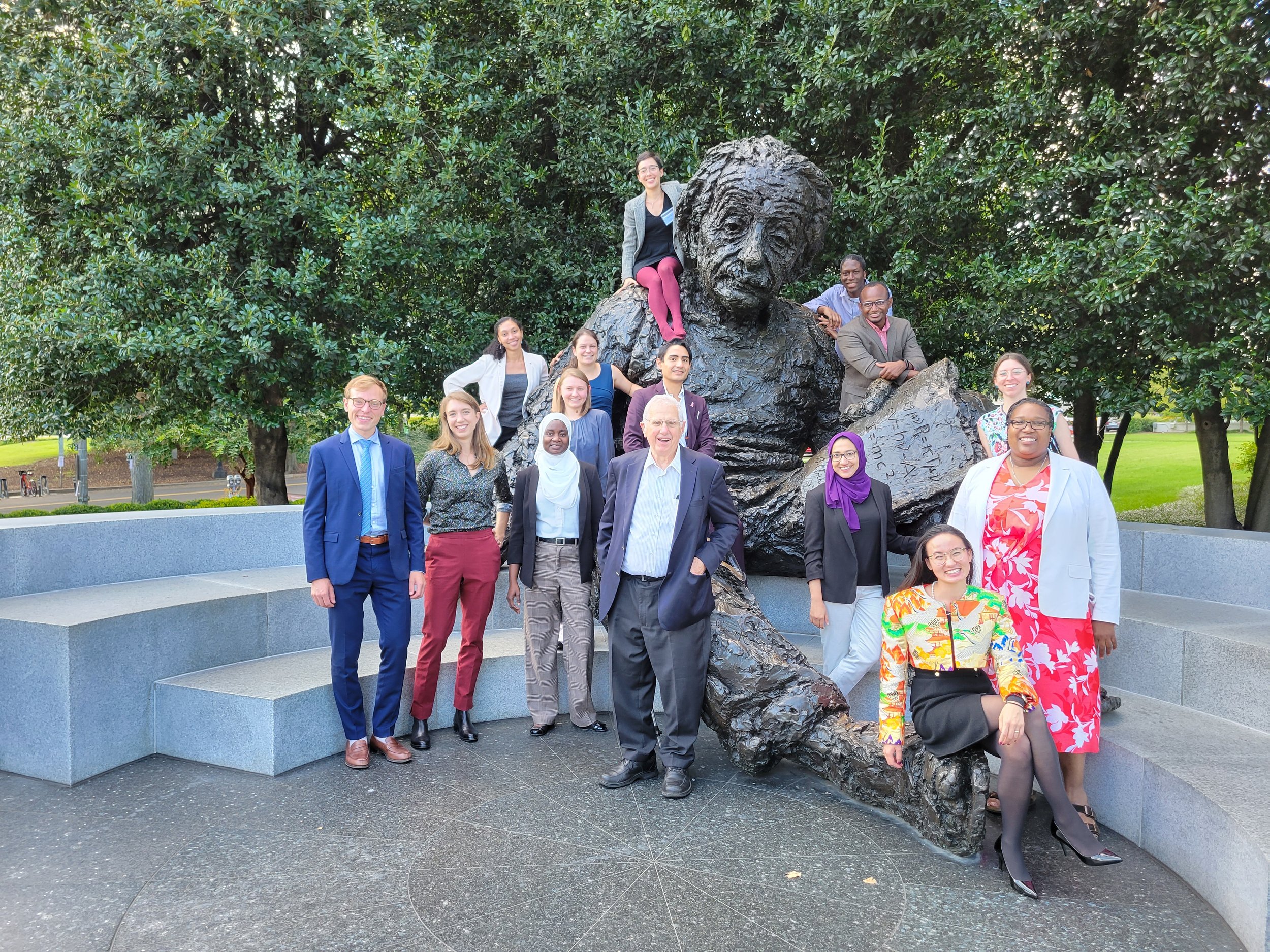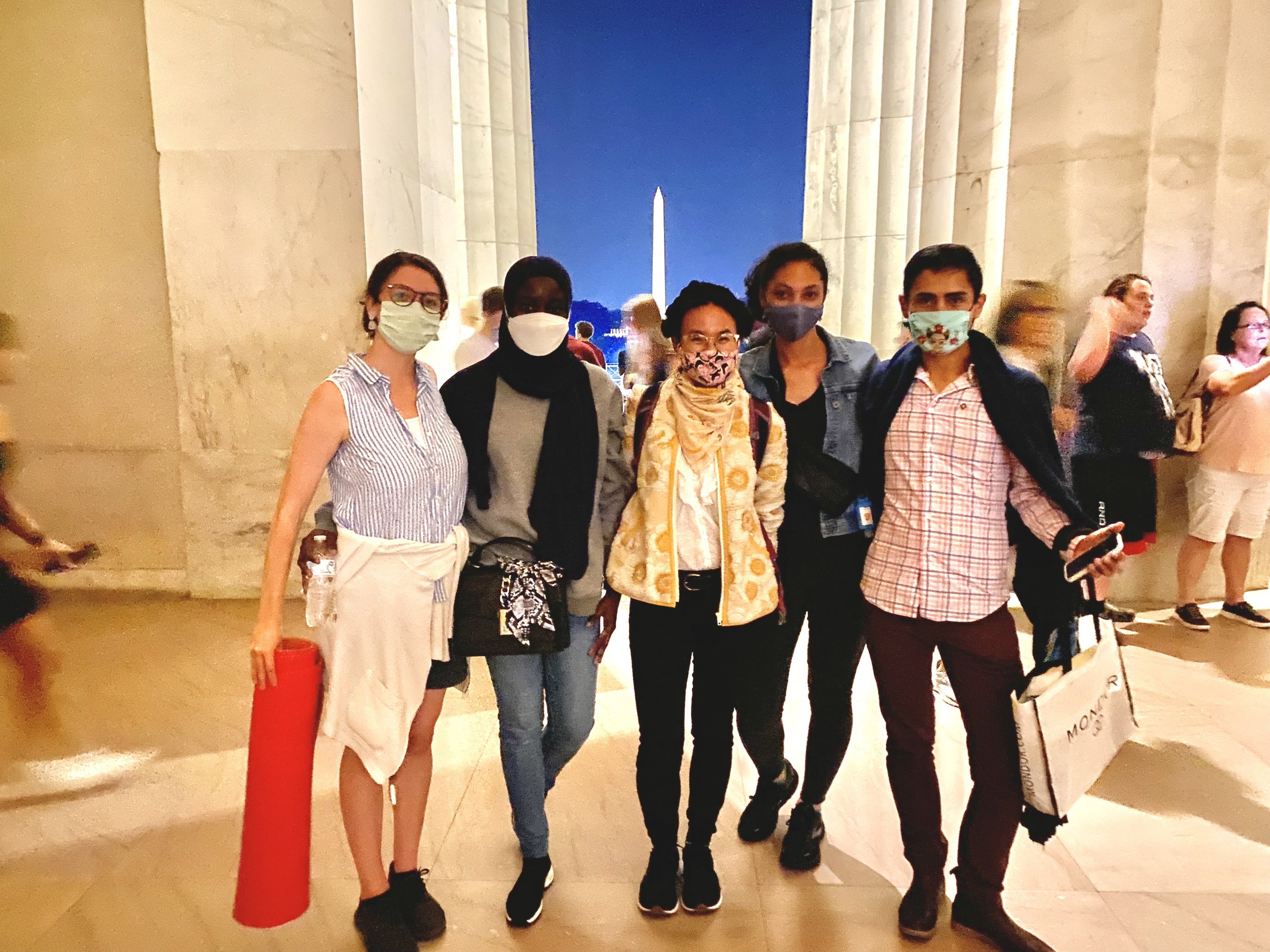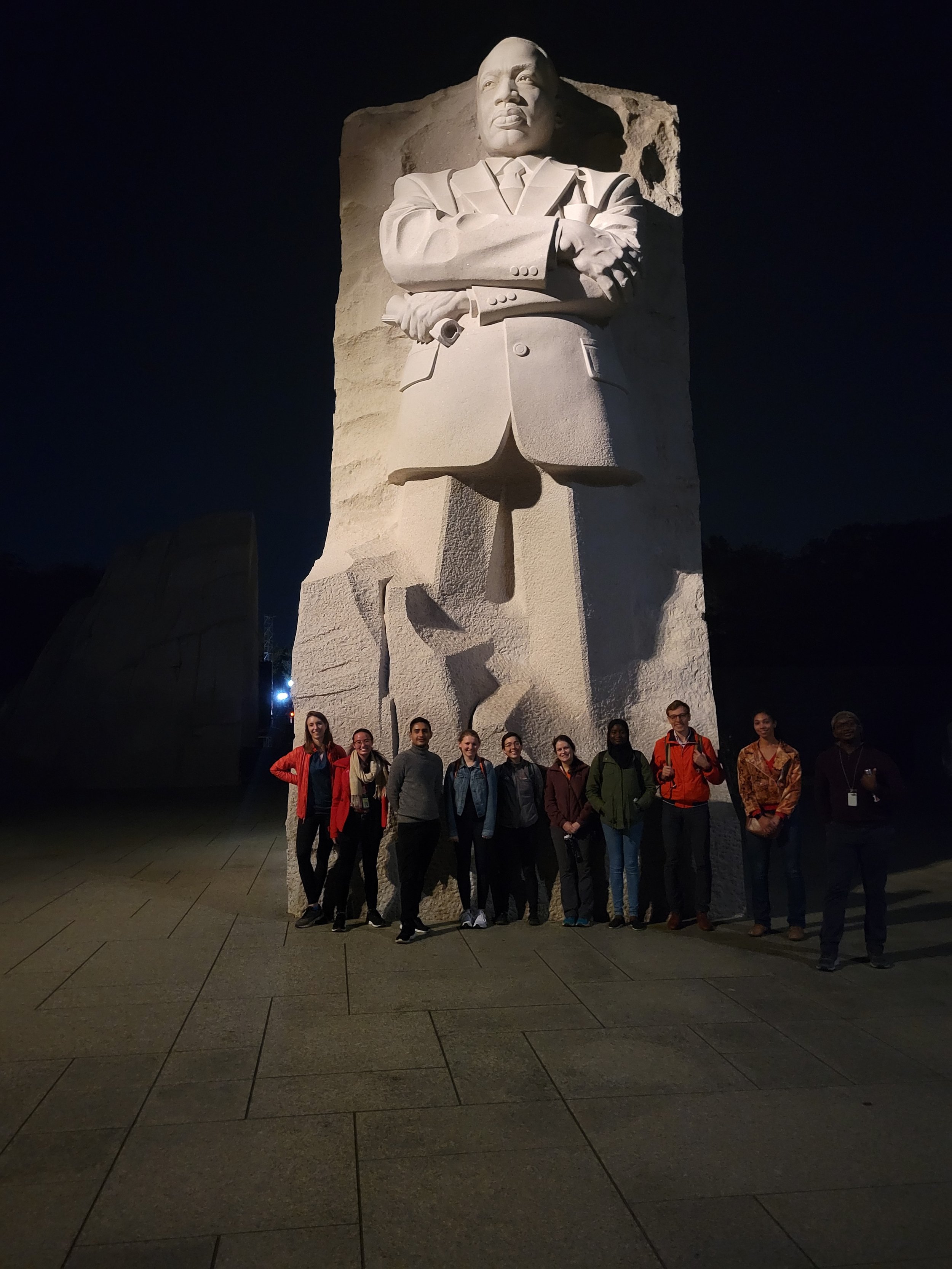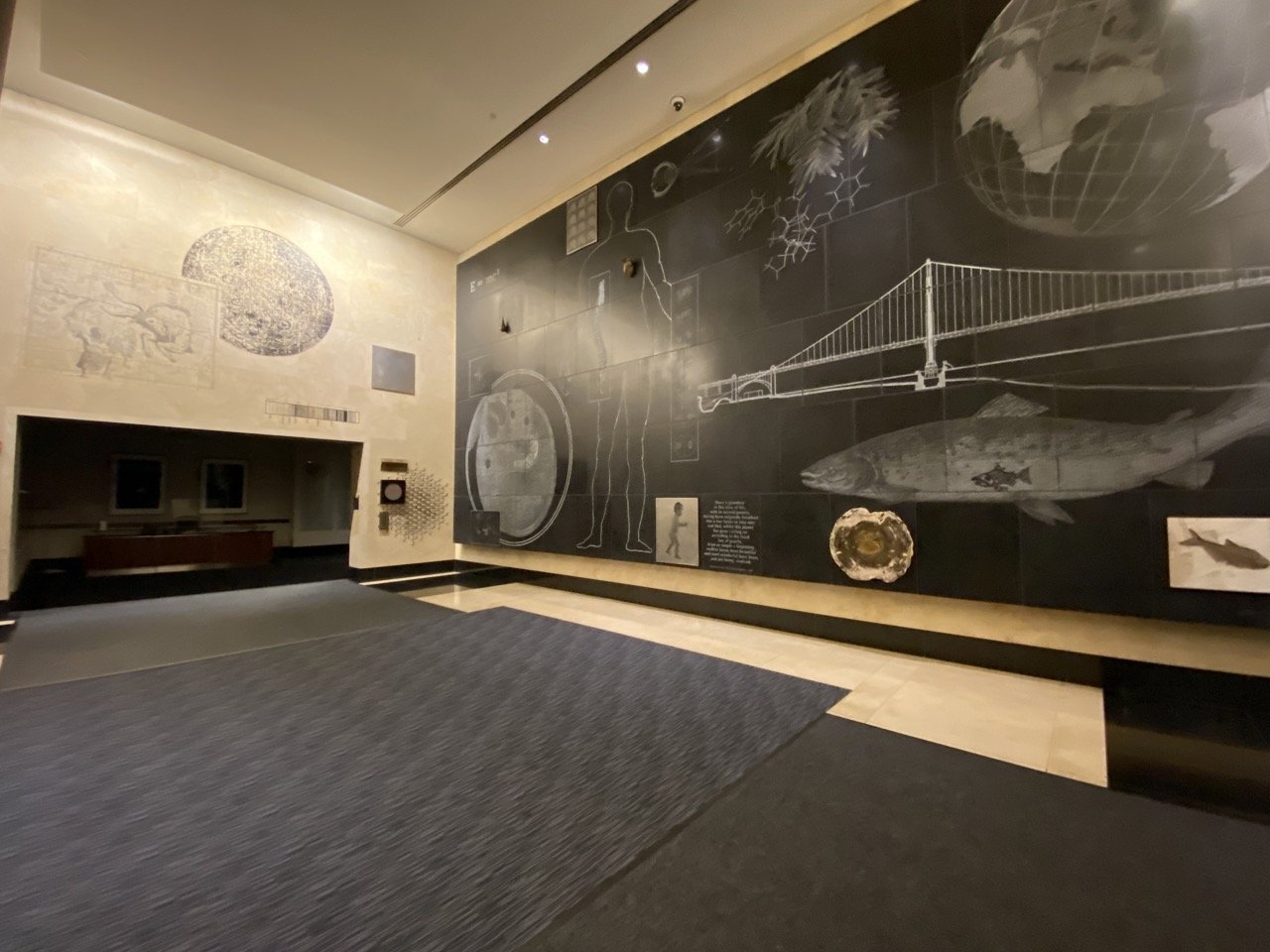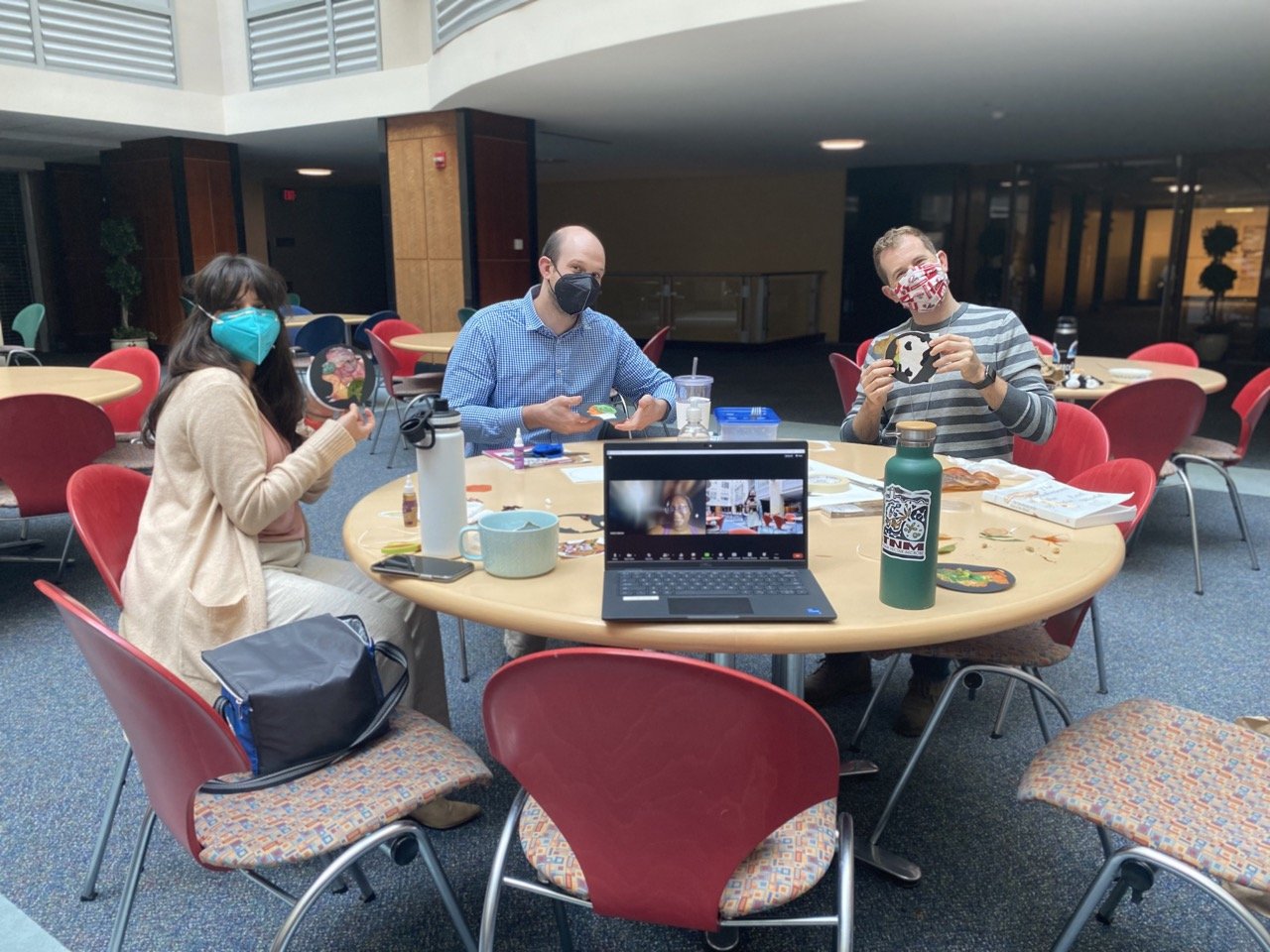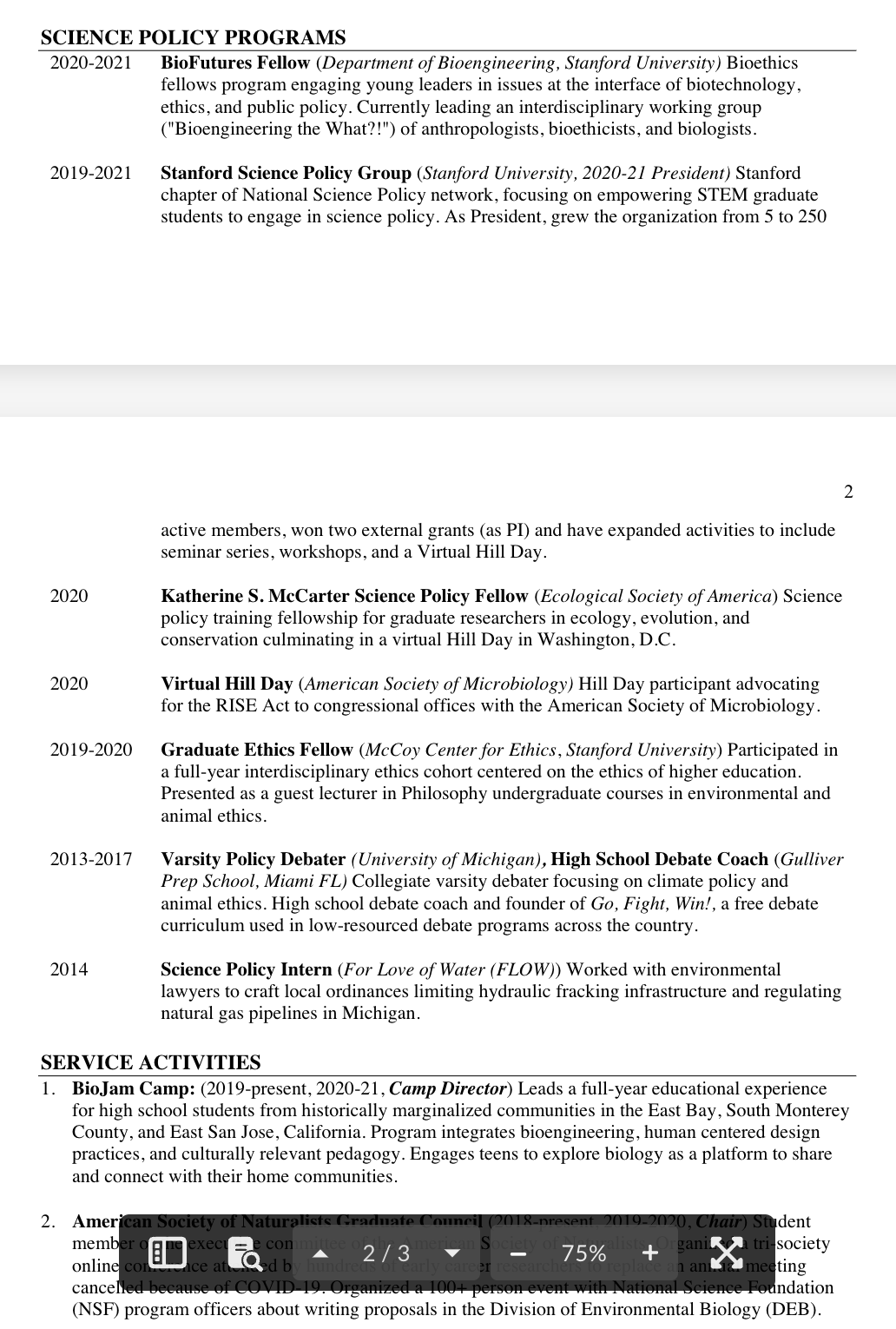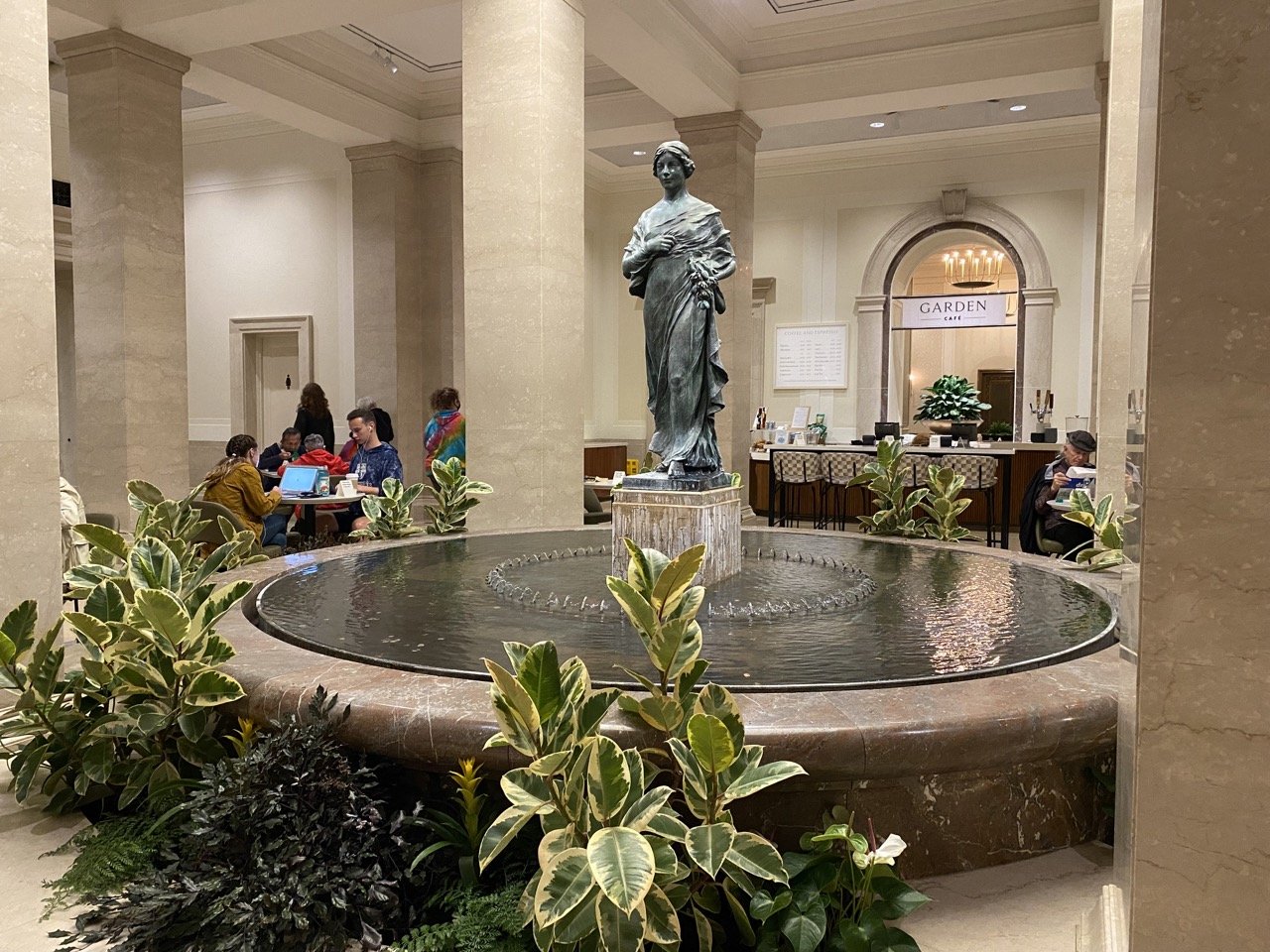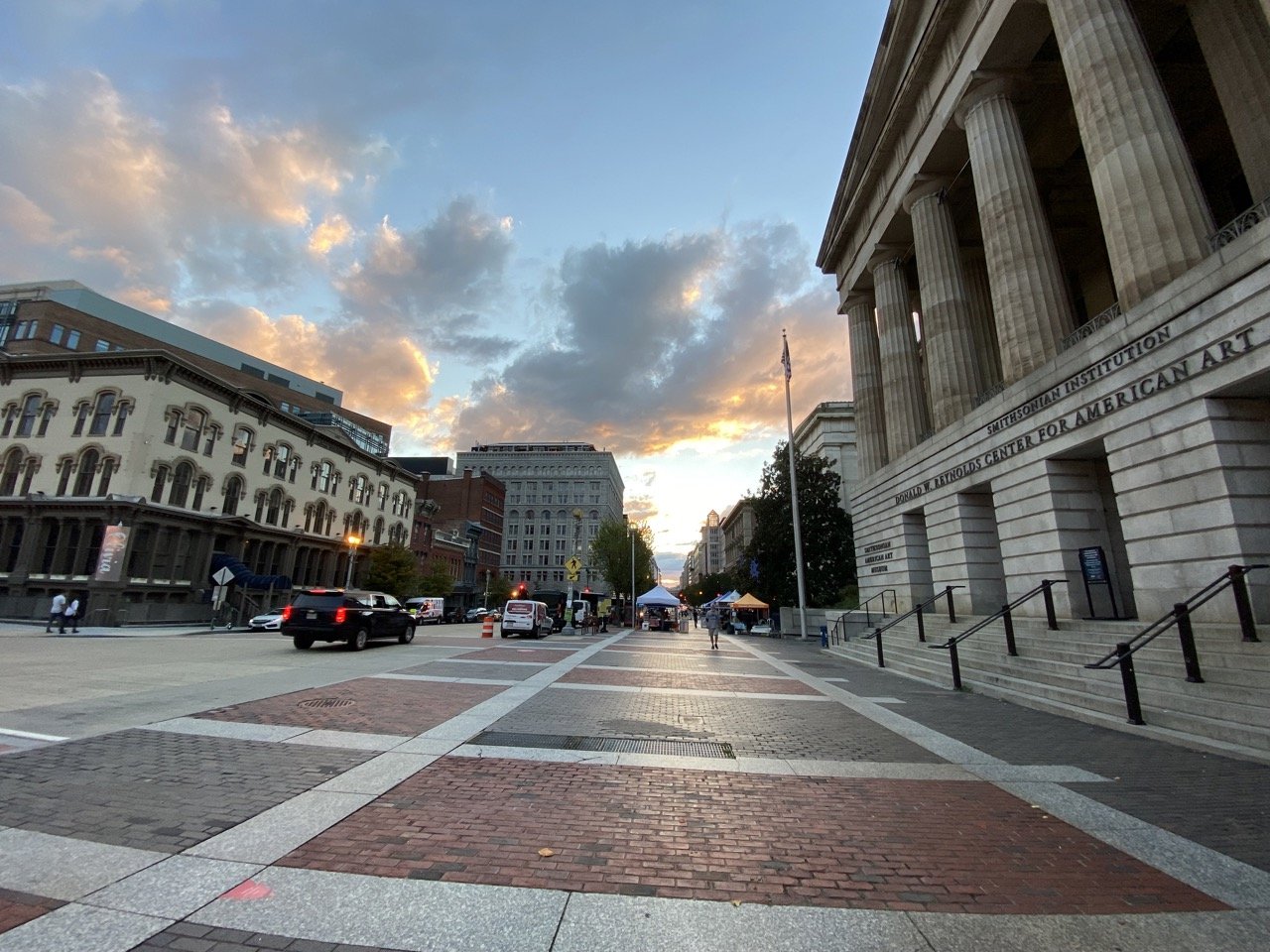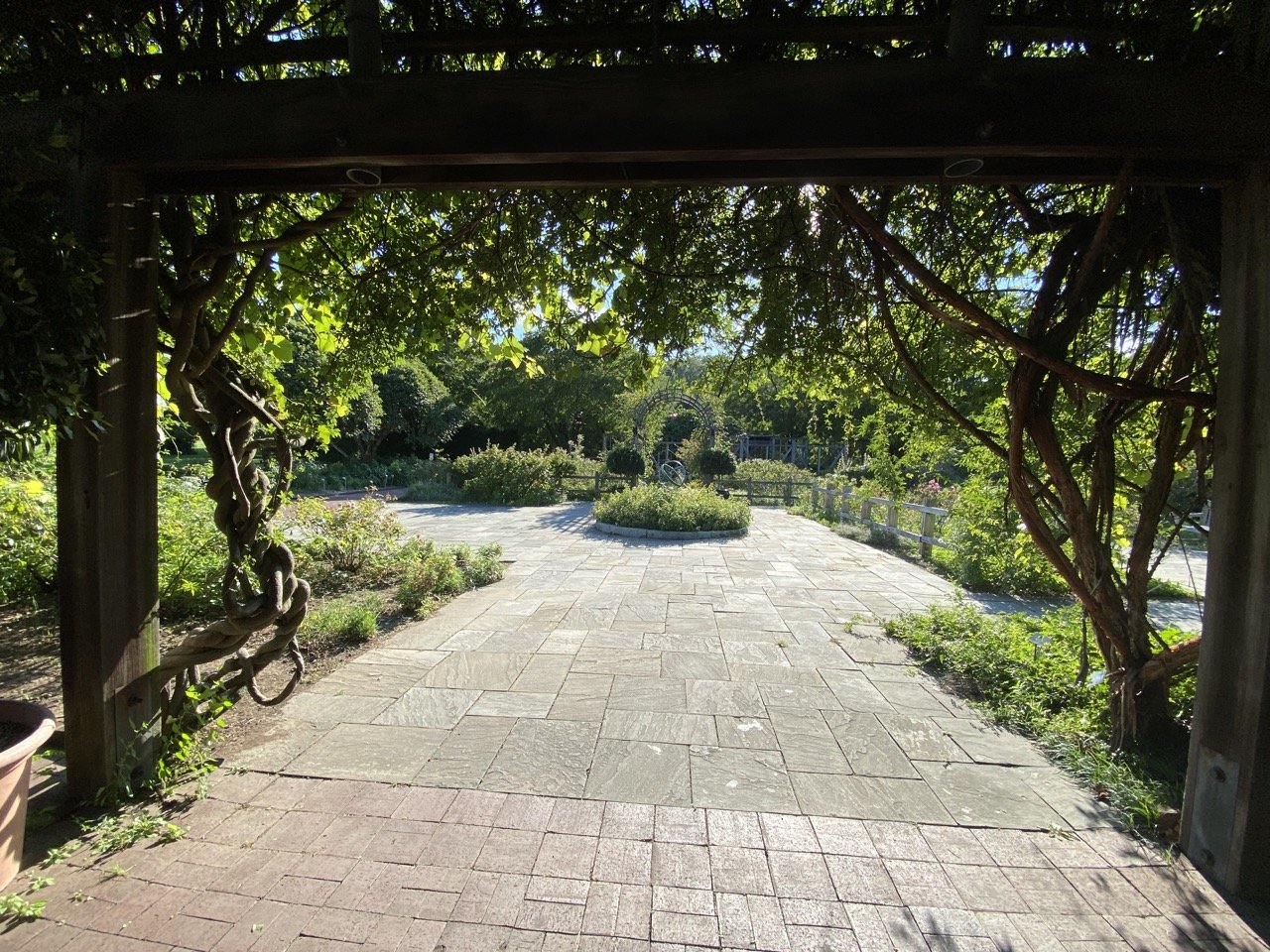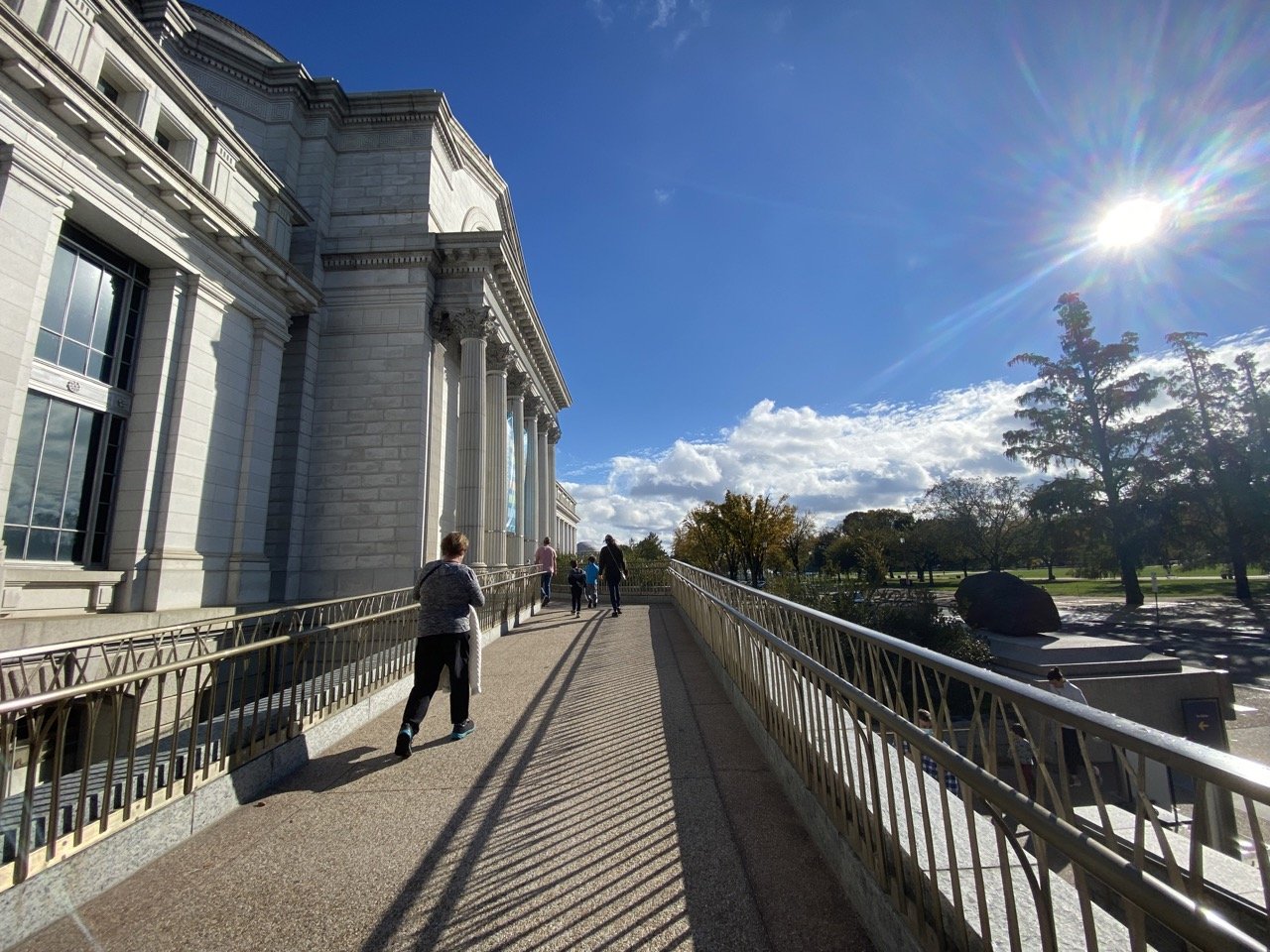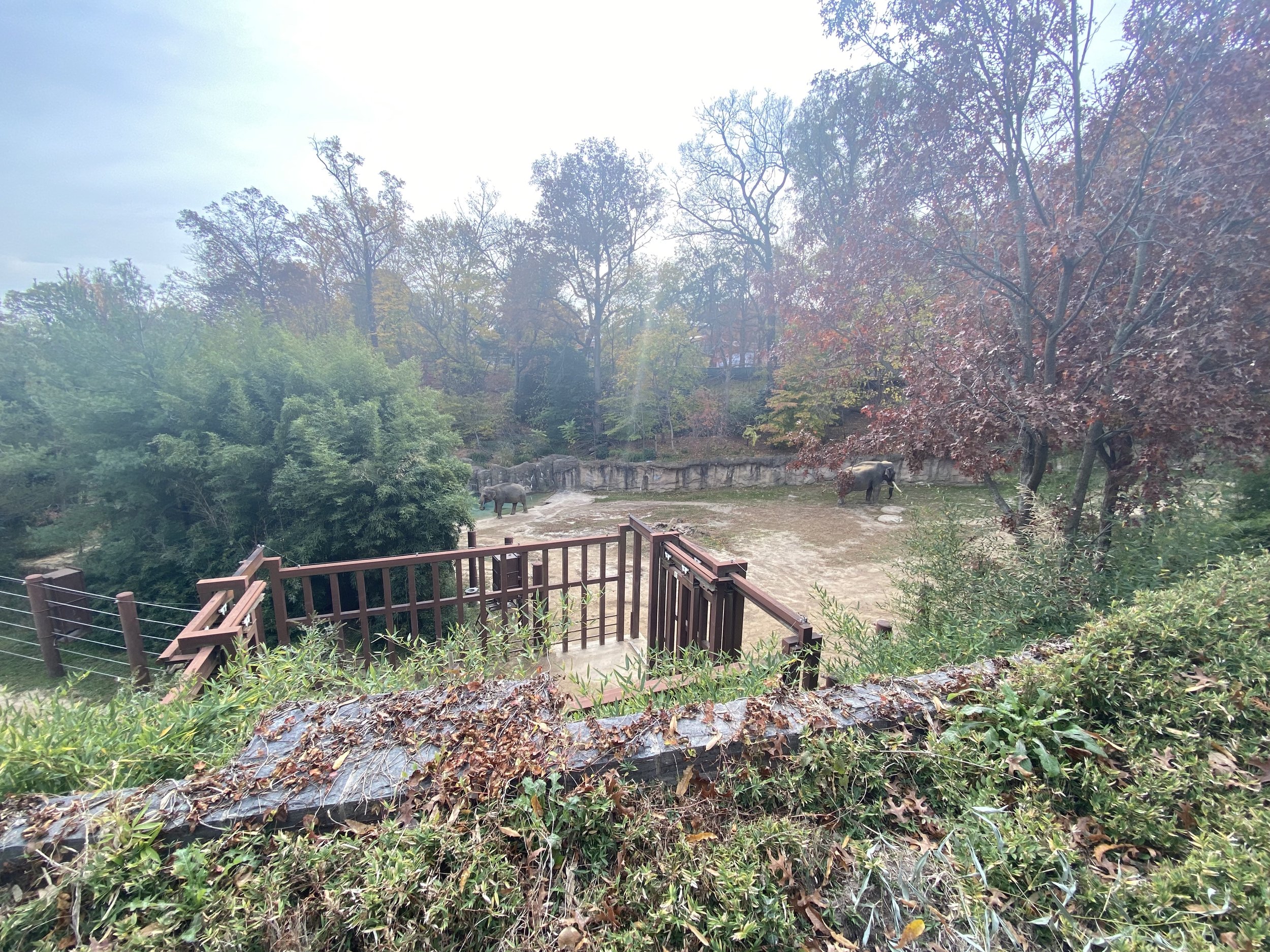Applying for the Mirzayan Science & Technology Policy Fellowship at the US National Academies of Sciences, Engineering, and Medicine
Welcome!
Hi there! If you’re here, you’re probably interested in applying for the Christine Mirzayan Science and Technology Policy Fellowship Program. The Mirzayan (which is pronounced “mir” (like Muir Woods or myrrh)- “ziah” (like sigh with a Z)-”un” (like hun)) is a 12-week fellowship program at the US National Academies of Sciences, Engineering, and Medicine.
In addition to this blog post, I want to amplify this awesome doc written by Melody Tan and others about applying to the fellowship.
One important change for the 2023 application cycle:
The application review is moving to an alumni review panel instead of being primarily reviewed by the Mirzayan program officer/director. Not sure how this will affect the process, but wanted to note that here.
I’ve also included photos of activities/places I visited during the fellowship. :)
Some disclaimers:
I was a Mirzayan Fellow in 2021 (Fall) on the Board on Life Sciences (Division of Earth and Life Sciences, DELS), and wanted to write a post about my experience applying for the fellowship in the hopes of helping others who want to participate in the program.
I had an incredible experience as a Mirzayan program. I loved my awesome cohort-mates and colleagues on the Board of Life Sciences. I also have some constructive thoughts about the program (outlined at the end of this post), which motivated me to write this post outlining what I see as an “hidden curriculum” surrounding the application process for this fellowship.
In particular, I cannot recommend my colleagues on the Board on Life Sciences highly enough. I had a wonderful and supportive mentor, board director, and the other program officers and staff in the group were incredible. BLS was an awesome place to be a Mirzayan fellow!
The contents of this blog post represent my feelings only and in no way represent the National Academies, the views of my colleagues there, or any other fellow/representative of the program. This blog post was also written September 2022, so if you’re viewing this in future years, the information may be out of date.
While the opinions represented here reflect mine only, I will disclose that two Academies staff who are involved in the Mirzayan program reviewed the contents of this post for accuracy (2022).
How do the National Academies work?
Before I explain about how the fellowship works, I want to provide an overview of how the National Academies works. This isn’t a perfectly accurate summary, but hopefully gets the main point across for the purposes of understanding how this fellowship works. The National Academy of Sciences, Engineering, and Medicine (or “The Academies” or “NASEM,” pronounced “nas” (like nasty)-”um”) is a non-profit that provides various resources, such as reports, workshops, and other products and convenings to provide guidance to groups, primarily the US government. You can read more about their activities here. The Academies are trying to redress their implicit assumptions about what expertise and objectivity means, but they still have a ways to go.
You may have heard of the National Academy of Sciences (NAS) (which I first learned about from the scientific journal The Proceedings of the National Academy of Sciences, PNAS, which is published by NASEM), the National Academy of Engineering (NAE), or the National Academy of Medicine (NAM). These three Academies work together to form NASEM and you can read about them here.
You may have encountered work by NASEM already! For example, I learned about NASEM after reading the landmark 2018 consensus study report about Sexual Harassment in Academia by the Committee on Women in Science, Engineering, and Medicine (PGA).
Who makes up the National Academies?
One component are Academy members, mainly distinguished professors that are elected into a volunteer position of Academy Members. The other component is a large team of staff members who work for NASEM and put together the events, convenings, and reports that make up NASEM’s activities.
NASEM organizational chart (units fall within each division). Image source: https://nam.edu/2016-presidents-address/nasem-org-chart/ (2016). Note that this figure is kind of outdated as The National Research Council terminology has been replaced with NASEM/The Academies.
These staff work as parts of various Program Divisions at NASEM, which you can see here. Program Divisions are similar to departments within a university Within each Division, and have their own Directors and administrative staff. Within each Division there are various units, such as Boards, Committees, etc. Each one has a Director and program staff such as program officers, senior program officers, research assistants, etc. You can think of each unit similar to a lab. Labs can be different sizes and focus on different things, but every lab has a PI (in this case, a Director). Program officers do the majority of the programmatic work within each units, such as overseeing the unit’s activities like reports, workshops, etc. Most program officers have PhDs and former Mirzayan fellows that then work for the Academies later (which many do!) are usually initially hired at the program officer level.
How does this impact which units I should apply for?
Various units accept Mirzayan Fellows each year, but the same groups don’t always accept fellows. Fellows can be funded in a variety of ways, such as through grants that the units get where they have line-items in the grant that fund fellows. Some units are better at doing this regularly than others, so if you look at the units that have accepted fellows over the years (have fun scrolling through all of those PDFs of former fellows!) you might notice that some units routinely accept fellows and others do less commonly.
If units don’t have funding for a fellow, they can still get a fellow because there is also a limited pot of money that the director of the Mirzayan program can use discretionarily to place fellows in units that don’t bring their own funding.
If you’re a graduate student, you might have had to scope out which potential PIs had funding for RAs before you joined a lab. The same goes for the Mirzayan program. I’ll talk more about reaching out to prospective units before applying below, but you probably get the picture that it’s wise to figure out whether units plan to take a fellow before applying to that unit.
What might I work on within each unit?
Many units have projects in mind that they’d like a Mirzayan fellow to work on, but that information often isn’t available online. You can see each unit’s current projects on each unit’s website on the NASEM page under the “our work” page, but sometimes there are ongoing projects that aren’t listed there. Again, I strongly encourage reaching out to boards you’re interested in ahead of time to find out what ongoing projects they have and figuring out if you’d be a good fit.
One pitfall is seeing former work from a board and getting really excited to work on that. Sometimes, you might see an old report or workshop from a board and be like, I want to do that! That’s all well and good (there are probably program officers on that board who would LOVE to talk to you about it!) but it might not reflect the ongoing work in the unit. Units get funding to work on specific projects and when those projects are completed, they often don’t work on them again. This means that projects that you might be really excited about that happened over 2 years ago probably aren’t active anymore.
Inside the lobby of the Keck building
Staff on my board (Board on Life Sciences) participating in a community art project I organized.
Before you apply: Reach out to prospective units!
As you may have gathered from the above sections explaining how the units work, I strongly recommend reaching out to your prospective units before preparing your application.
It used to be that all boards are listed on the website, but one update in 2022 is that the units that have directly indicated that they are interested in hosting a fellow are marked with an asterisk in the “prospective units” tab on the Mirzayan website (https://mirzayanfellow.nas.edu/) and units who expressly indicated that they would not be hosting a fellow this year have been removed from the list.
It is helpful to reach out to program officers/directors at units you’re interested in ahead of time to see what projects you’d be working on at each unit and whether (1) you’re interested in that project and (2) see whether you have relevant expertise. It’s useful to craft your application essay to make the case that you’d be a good fit for that unit’s project.
One important caveat is that some units might not know what project their fellow will be working on. They might not know that when you speak with them ahead of time, or if they have some guesses, those projects might not come through or be active by the time you are a fellow. Just know that there is some uncertainty in the process and not to get your heart set on a specific project. The Mirzayan is beneficial for so many reasons that just the specific project you’re working on!
How do I reach out to each unit?
You can cold-email program officers. Most units have their program officers and their contact info on their About page (scroll down to the staff section). If you can’t find their email, you might be able to figure out the neat heuristic that the Academies uses to assign staff emails… If you’re very lucky and know someone who can connect you directly, that also works.
Here is what a sample email might look like to a program officer:
Dear Dr. X,
I’m a current PhD candidate at Y and am interested in applying to the Mirzayan Science and Technology Policy Fellows program. I am particularly interested in [their unit] because [explain why]. I’d like to learn more about your work and whether your unit plans on taking a fellow this year. I’m sure you’re very busy, but if you have time for a brief meeting so I could learn more about your ongoing work, I would be very appreciative.
Thank you for your consideration!
Best,
[Your name]
Optional: Institutional affiliation, link to professional website, LinkedIn, etc.)
I would strongly recommend reaching out to every board you intend on applying to and scheduling meetings to learn (1) whether the unit plans to host a fellow and (2) if so, what you’d work on. You can use this information to inform what boards you choose and what information you include in your Statement of Interest (more information below).
If you don’t get a reply after 1 week, it is generally fine to send a brief follow-up. If you don’t get a reply to your follow-up, probably this isn’t the best person to speak with!
Dear Dr. X,
Thank you for considering my prior email. I’m still interested in meeting, but understand if you are too busy to right now. If so, would you be able to connect me with someone else I could speak to?
Thank you for your consideration.
Best,
[Your name]
What do I say in my meeting with the program officer?
Me and my Mirzayan mentor
First and foremost, get a vibe check to see if this is someone you might enjoy being colleagues with. Be professional, but friendly—this person might be your future colleague! Even if this ends up not being a match for the program, this person could be a future mentor or colleague of yours in a different context.
In a casual way, I would encourage you to ask if the unit is interested in hosting a fellow and if so, what projects the unit is currently working on. This is also a wonderful opportunity to learn more about the culture and work-life on each board! You can also reach out to former fellows on each board to hear about their experiences (from a fellows perspective).
If the conversation goes well, you can consider asking if the program officer can connect you with the program director, but they are often really busy so this might not be possible.
After your meeting
After my meetings, I always send a thank-you email (bonus points for a handwritten thank-you note— you’d be surprised how far those go) and let the program officer and/or director know when I had submitted my application. I also sent a few follow-up emails if I had additional questions later, but tried to be respectful of their time.
A couple of other notes
It’s best to do these interviews well ahead of the application so it’s not rushed at the end. I would suggest reaching out 2-3 months ahead of the application due date, or even earlier if possible.
I also want to emphasize that you do NOT have to do this in order to get this fellowship! Every year there are fellows who did NOT do this, so do not think that you need to do this in order to be a competitive applicant!
I am writing this blog post about aspects that helped me in the application, but by no means do you have to do this in order to be successful. I have felt really bad that there is this “hidden curriculum” that some people are aware of and subsequently helps them be more competitive in the application process than others. I feel this can lead to elitism and inequity in the selection process, so I wanted to write this blog post to help make the entire process more transparent for all.
How do I apply?
Okay, now that you’ve done your leg-work, it’s time to turn to the actual application. The Mirzayan application has three parts:
Statement of Interest: In 500 words or fewer, please answer the following questions:
Why are you interested in being a Mirzayan Fellow?
How do you hope this experience will contribute to your career goals?
What qualities and attributes will you contribute to the Mirzayan Fellowship?
Is there anything else you would like us to know about you?
Professional Experience: Submit a Curriculum Vitae, which is a PDF upload that needs to be 3 pages or under.
Letters of Recommendation: Two online letters of recommendation are required to complete the application process. References must pertain to your academic, professional, or work-related experience. You will NOT be able to submit your application until both letters have been received. Mailed letters will NOT be accepted. Review full Reference Requirements before starting your application.
Prospective Unit selection: You can select up to 7 prospective units to apply to. You can see the list of prospective units here, under the “prospective units” tab. Boards who have expressed interest in hosting a fellow are marked with an asterisk(*).
I’ll walk you through each part of the application below.
Inside the National Academies building on Constitution Ave
View from the rooftop patio of the Keck buidling
A mushroom grew in a potted plant in my office!
One quick note about this — I use my application as examples in several parts. I had been really fortunate to participate in a lot of science-policy related activities before applying for this fellowship, which I completed at the beginning of the 5th year of my PhD. You do not need this much science policy experience to be a successful Mirzayan applicant! In fact, many other types of expertise, especially cultural knowledge and lived experience, are much more important and valuable than specific science policy experiences! Many members of my fabulous and impressive cohort had very different experiences and expertise than I. We celebrated the life experiences and expertise EVERYBODY brought to the table.
Statement of Interest
In 500 words or fewer, please answer the following questions:
Why are you interested in being a Mirzayan Fellow?
How do you hope this experience will contribute to your career goals?
What qualities and attributes will you contribute to the Mirzayan Fellowship?
Is there anything else you would like us to know about you?
This should be a brief essay that contextualizes your prior experiences in terms of why you’d be an ideal candidate for each board and their current project that you’d be working on. This should complement, not recapitulate, your CV!! Instead of a laundry list of your accomplishments and experiences, as you have in your CV, this should be space to explain HOW these experiences will make you a value-add to the boards you are applying for. This is the space where you can use all those juicy details you got from speaking with program officers about the specific projects and how you could bring unique perspective and expertise to it. This is also space for you to explain how the fellowship will help you achieve your long-term career goals.
Here is the essay I submitted:
Growing up as a Chinese adoptee in the rural Midwest, people's assumptions of me often diverged from my lived experience. This taught me to span perspectives, bring people together, and motivate change in STEM. My unique lens drives me to empower the disenfranchised, protect the environment, and advance social justice. Through the Mirzayan fellowship, I hope to apply my 10 years of science advocacy experience to build a career in science policy at the national level.
My PhD research focuses on the effects of bioengineered, non-model organisms on the environment. Outside the lab, I lead a working group, "Bioengineering the What?!" of lawyers, anthropologists, and ethicists writing about biosecurity, sustainability, and justice in synthetic biology. As an ecologist, integrating human and ecological systems into BLS, DELS, or STS's bioeconomy initiatives would build on my disciplinary expertise.
As the president of the Stanford Science Policy Group (SSPG), I empower STEM researchers to engage with law and policy. Under my leadership, I grew SSPG from five to 200+ members in two years, won external grants, and collaborated with Berkeley and UCSF. My team hosts speakers from across the country, leads workshops on science communication and advocacy, and organizes Hill Days promoting open-access publishing. I have learned how to convene and empower interdisciplinary groups to accomplish common goals, while also expanding my expertise with policymaking and policy research. This interdisciplinary expertise aligns well with COSEMPUP, CSTL, and BHEW. I am particularly interested in updating On Being a Scientist, given my interest in research ethics across scientific disciplines.
I am passionate about advancing social justice in STEM through mentorship and institutional policy. At Stanford, I have conducted all of my PhD research by leading a team of ten undergraduate students from first-generation, low-income, and/or underrepresented backgrounds. Locally, I promote science justice by leading BioJam, a multi-year STEAM education program for low-income youth of color. Teens explore bioengineering through their own cultural lens and share their learning back with their home communities. As the chair of the American Society of Naturalists' graduate council, I have worked to create cross-institution policies that promote science justice, by creating antiracism training, leading a tri-institution Title IX report, and writing a joint Code of Ethics for the three largest societies in Evolutionary Biology. I can contribute to CWSEM's action collaborative and consensus study through my experience integrating local activism with top-down policy changes, although my experience supports work in any unit.
Through the Mirzayan fellowship, I hope to connect global communities, NASEM and the science policy world, with local communities, youth, activists, and grassroots organizations, to expand perspectives in science policy. The Mirzayan fellowship will build on and broaden my policy experience at the national and international level. I aspire to a career as a program officer and future director at NASEM, convening diverse groups at the vanguard of science and technology policy. As science practitioners and policymakers, our hands are on the levers of power. But it cannot be mine or yours, it must be ours.
Professional Experience
This is where you share your CV. You can see my research CV on this website, but I made a special version of my CV for this application with a “Science Policy Programs” section. In this section, I had brief descriptions of each of the science policy-related activities I had participated in so the reviewers could learn more about them without me having to spend precious words in my statement of interest explaining each part.
Letters of Recommendation
This is the most straightforward part of the application! Typically people submit a letter from their advisor (or research mentor) and someone else. In my case, I chose someone who had mentored me for many years in my science policy activities.
One challenge that I had with the LOR is the fact that my advisor and even this other mentor didn’t know about all of the random stuff I had done! To help them, I wrote a detailed doc explaining what activities I wanted each of them to amplify and discuss in their letters and had 1-1 meetings with both of them a month or two ahead of the application being due to explain each component. Then they would know about it and also have draft language (bullet points in a many page google doc) to help guide their letter. I totally recognize this is very overboard, but many STEM academics (at least those in my life) had never written a letter like this before and are also super busy and I think they appreciated the guidance.
Prospective Unit Selection
Beautiful afternoon at Rock Creek Park!
As discussed above, you can research each unit online and see their past and current projects. Current projects are much more informative than past projects! You can learn about current work on the board online, as well as by talking to program officers.
I would encourage you to select as many units as you can. Each unit gets the applications from all applicants that select their unit and choose their fellow based on that pile. The units then send their short-list of preferred candidates to the Mirzayan program director/officer, who then decides which boards will get fellows and the final list of fellows (this is also dependent on how discretionary funding there is for fellows that boards can’t independently fund). This means you really want to make the case in your application for every unit why you are the best candidate for their unit and their specific project (so they recommend you to the Mirzayan program officer/director), as well as being a strong candidate overall at the final selection stage.
I hope this emphasizes again how helpful it is to be in communication with program officers/directors before you apply. Not only will you know what units to apply for and their projects (for the statement of interest), but also have a personal connection with someone who can advocate on your behalf within each unit.
What happens if I get it (or don’t)?
If you get it, congrats! Now it’s time to think about finances (if you haven’t already)
Congrats for getting the fellowship! Now you’ll have the exciting opportunity to move to DC and learn about the Academies (as well as have some time to do other networking and exploring in the DMV!). One important consideration is whether you can afford to do the fellowship. When I got the Mirzayan, I learned that my institution would require me to take a Leave of Absence and un-enroll as a graduate student. What that meant was that I would not be paid my stipend as a graduate student for the 4-month period around the fellowship and
I would also lose my university-based health insurance. I had to support myself on the then $9,000 stipend, which needed to cover housing, food, transportation, and moving costs to DC since I had no external financial support. I was living in the Bay Area of California before, but was unpleasantly surprised how expensive it is to live in DC during such a short period of time. Before accepting (or even applying to the fellowship), I would think critically about your university’s policies (other fellows were able to keep their graduate stipends and health insurance during the duration of the fellowship) and whether the fellowship is financially viable. Fortunately, I had a little money saved up and was able to sublet my room in California but honestly, after the fellowship had ended, I had spent almost $3,000 in savings (after spending all of the stipend) for all living-related expenses to do the fellowship. As of 2022, the fellowship stipend is now $11,000 (yay!!), but affordability is definitely something to consider before even applying.
If you don’t get it, you are still wonderful and fabulous!
As hopefully I’ve been able to convey in this blog post, if you don’t get the fellowship, it could be due to lots of things that have very little to do with your awesomeness. For example, maybe someone else who applied for your same units had slightly more research expertise for the random project that unit wanted a fellow for (not related to how awesome you are!), or the program officer was hungry or randomly in a bad mood when they read your application (not related to how awesome you are!), the units you wanted weren’t accepting fellows this year, or (even worse) another person who applied had a letter-writer who is a personal friend of the person reviewing your application and that subtly biased them towards that other person’s application (sadly, nepotism is still going strong!).
This fellowship—and no fellowship, award, or job—is a referendum on your awesomeness. In fact, I can tell you right now that your awesomeness has nothing to do with how good you are at your job, how many accolades you have, or whether you get a fellowship. In my opinion, what matters is the integrity and care with which you move through the world and how you treat the people around you. And believe me, that has nothing to do with whether you get this fellowship or not.
Alright, I’ll get off my soapbox now, but seriously: YOU. ARE. AWESOME!
Also, consider applying next year! The eligibility has expanded to five years post graduate degree, so if you don’t get it this time, keep trying! If you reached out to boards in this application cycle, they’ll likely be impressed with your resilience and determination to apply again next year. :)
Interactive art exhibit at Artechouse (Life of a Neuron)
Art exhibit at the Hirschhorn museum (Laurie Anderson)
National Gallery of Art
Pros and cons of the Mirzayan
Like anything, there are pos and cons of this program. And again, let me reiterate that these are my opinions and my opinions alone.
Pros of the Mirzayan
First of all, the people. My cohort was AMAZING and I am still really good friends with cohort-mates, as well as random people I met in DC through networking, chatting with people on the street, attending cultural and community events, and meeting rad people online.
Second, the space to take a pause in grad school life and try something new. I did this fellowship in the 5th year of my PhD. I had a stable life and flow as a graduate student, but disrupting that and moving across the country was both chaotic and also very valuable in pushing me to reflect more critically on my values, perspective on life, and what I wanted my career to be about. I felt I was able to return to grad school with a more clear-headed drive and set of goals.
Third, developing a really dense and valuable network in DC and beyond. My year was a bit odd because it was in DC but the work was mainly online. This meant that I was able to network with people associated with my project at NASEM, as well as people in my area of professional interest I was able to connect with through my NASEM colleagues and the free time I had as part of the fellowship (part of your time is meant to be for professional networking).
Cons of the Mirzayan
I have two main critiques of this program:
First, it is expensive. As I explained above, in my specific financial situation (no external financial support, no additional stipend, no health insurance), the provided stipend was barely/not livable depending on your expenses. This limits who can participate in the program and skews it towards those who have financially supportive institutions (boo, Stanford!) and/or external financial/living support.
Second, the application process has this totally opaque “insider track” as I’ve described here with reaching out to program officers that is NOT clear from the official website. Again, while this is NOT necessary to get the fellowship, it definitely helps and a number of fellows every year did this. I think this skews the successful applicants towards those who are well-connected with former fellows, people at NASEM already, or come from institutions where this institutional knowledge exists. My main motivation to write this post is to have a publicly-accessible resource explaining this to hopefully help equalize things in the short-term.
Friends in my cohort and I (and I’m sure many before and after us!) have pushed the Mirzayan program to both increase the stipend to be livable AND reform the application process to eliminate this “inside track” but we have a lot more work to do. This blog post is a small thing I work towards the more equitable and just future I envision, where this program reflects a broader diversity of institutions, disciplinary and cultural backgrounds.
A note about change
In the process of writing this and getting it reviewed by Academies staff, I learned that several of my concerns about the program had been addressed through policy changes since I and others pushed for them as fellows in 2021. I was happy to see that the stipend had been $2,000 (to increase financial accessibility), boards taking fellows were explicitly marked on the website (to decrease dependence on this “inside track” of interviews to optimize which units to apply to), and last year, the institutions fellows came from where noticeably more diverse. Even though these are small steps, several friends in my cohort and I were outspoken about changes we wished to see in the program to improve equity and justice. Although there is always more work to be done (especially structurally), I am very appreciative that these measures have been taken to follow our suggestions and improve the program. I hope that sharing these small wins encourages you to keep fighting the good fight!


